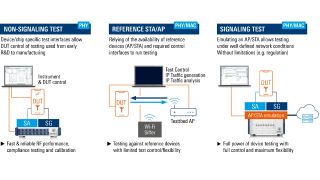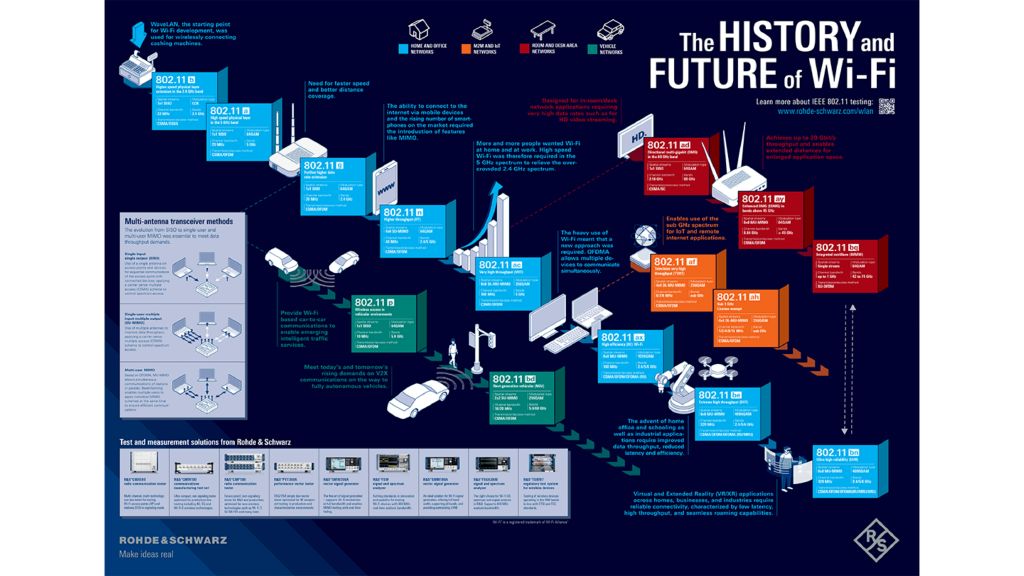Testing for Wi-Fi/WLAN connectivity
Connecting homes, office and factories
Wireless local area network (WLAN) technology, based on the IEEE 802.11 standard series, has been one of the most successful wireless communication technologies over the last 25 years. It utilizes an orthogonal frequency division multiplexing (OFDM) access scheme and typically operates in license-exempt bands such as 2.4 GHz, 5 GHz, 6 GHz, and 60 GHz. WLAN supports a significant portion of traffic from various devices in modern wireless communication networks.
The sixth generation of Wi-Fi (Wi-Fi 6), based on the IEEE 802.11ax standard, enhances communication efficiency and is the first to operate in the newly available 6 GHz spectrum (Wi-Fi 6E). The seventh generation (Wi-Fi 7), based on IEEE 802.11be / EHT, is also here, offering extremely high throughput. And IEEE is already developing the next generation of Wi-Fi (Wi -Fi 8), focusing on an improved customer experience and ultra high reliability (IEEE 802.11bn / UHR).
Wi-Fi use cases
WLAN has become an essential component for wireless data services in various environments. People use Wi-Fi for remote work, home schooling, video conferencing and a wide range of entertainment activities, such as gaming, streaming and sharing.
The demand for video traffic continues to grow, driven by increased viewing time, more video content and the shift to higher resolutions. WLAN users expect reliable and near real time experiences for gaming and cloud computing on all kinds of wireless devices, from smartphones to XR glasses.
Wi-Fi also plays a pivotal role in connecting internet of things (IoT) devices in homes and offices. It is also an integral part of Matter, the unified smart home standard from the Connectivity Standards Alliance (CSA).
Discuss your WIFI device test cases with our experts.?


















